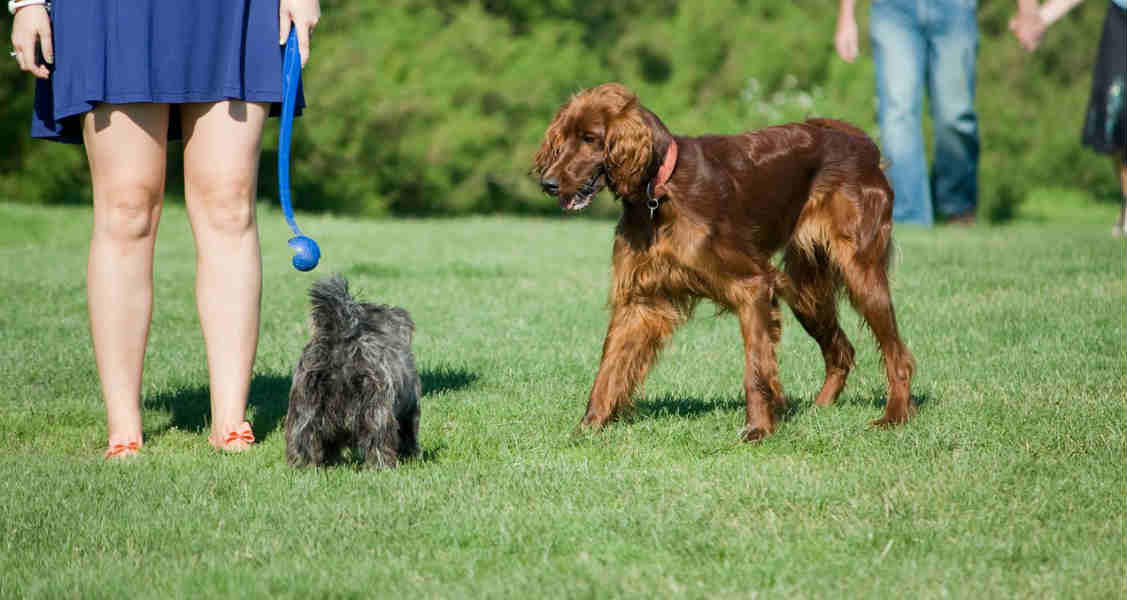Dog Parks – The Good, The Bad, & The Furry
By: Dr. Ryan Llera, B.Sc., DVM | Aug 10, 2018

Over the past several years, dog parks have sprung up in communities as a place for your canine companion to get some exercise and depending on rules, meet other dogs. Dog parks can be wonderful places, but they aren’t meant for everybody. Let’s look at why this is and also review some etiquette.
The Good
Everyone loves their own dog. Many people love other dogs. Visiting the dog park is a great place to get your dog socialized with other people and dogs to help acclimate them and hopefully avoid some unwanted behaviors. Dogs evolved as pack animals and the social aspect can be good for their mental stimulation. You also will get to meet new people, maybe even your future spouse or a new close friend. Rover will also get that much-needed exercise to help fight off obesity by staying active.
The Bad
Remember what I said about dogs being pack animals? Well, that can work against them as dogs meet each other for the first time, the potential for dominance aggression behavior is always possible. Yes, dogs like children might fight on the playground. Fights should try to be broken up by calling your dog or making some noise to distract them which might make it easier to pull them apart. Another downside to these public places is that they can be a breeding ground for disease. Infectious viruses, bacterial infections, or parasites can all be picked up at the park. Also, dogs will be dogs…and if your dog is not spayed or neutered, then somebody could be expecting puppies in around 2 months.
The Furry (the Etiquette)
- Make sure your dog is vaccinated and is free of fleas. Not only are you protecting your pet, but also everyone else and the public.
- Spay or neuter your pet! This will help prevent unwanted behaviors which can lead to fights or unwanted puppies. If spay/neuter is not an option, please keep your in heat dogs away for at least 2 weeks after the visible signs have stopped.
- Teach your dog simple commands – sit, stay, and come are three basic commands to ensure everyone has a safe and enjoyable time.
- Before letting your dog off-leash, it can be a good idea to let them meet the other dogs to see how their personalities and initial reactions are. If there are obvious signs of aggression, you still have control while they are on a leash and can pick another time to come back.
- If you know your dog is anxious or does not play well with others, go at times that are less busy. This category might also include a new dog to the family that has not had time to get trained yet. Another recommendation is to tie a yellow ribbon onto their leash or collar as a sign to others that your dog needs space. For more info, check out the Yellow Dog Project.
- Avoid bringing toys or other personal possessions of your dog which may cause conflict with others. If you bring something, perhaps a new toy is in order so your dog does not feel possessive.
- Limit your time at the park to no more than 60 minutes. Not only does this let other dogs and families have a turn but it also is a good way to make sure your dog does not get overheated.
- And lastly, pick up after your pooch!
A trip to the dog park can be a great bonding experience for you and your canine companion. Just be sure to be safe and courteous so that everyone has an enjoyable time!


Disclaimer: healthcareforpets.com and its team of veterinarians and clinicians do not endorse any products, services, or recommended advice. All advice presented by our veterinarians, clinicians, tools, resources, etc is not meant to replace a regular physical exam and consultation with your primary veterinarian or other clinicians. We always encourage you to seek medical advice from your regular veterinarian.

